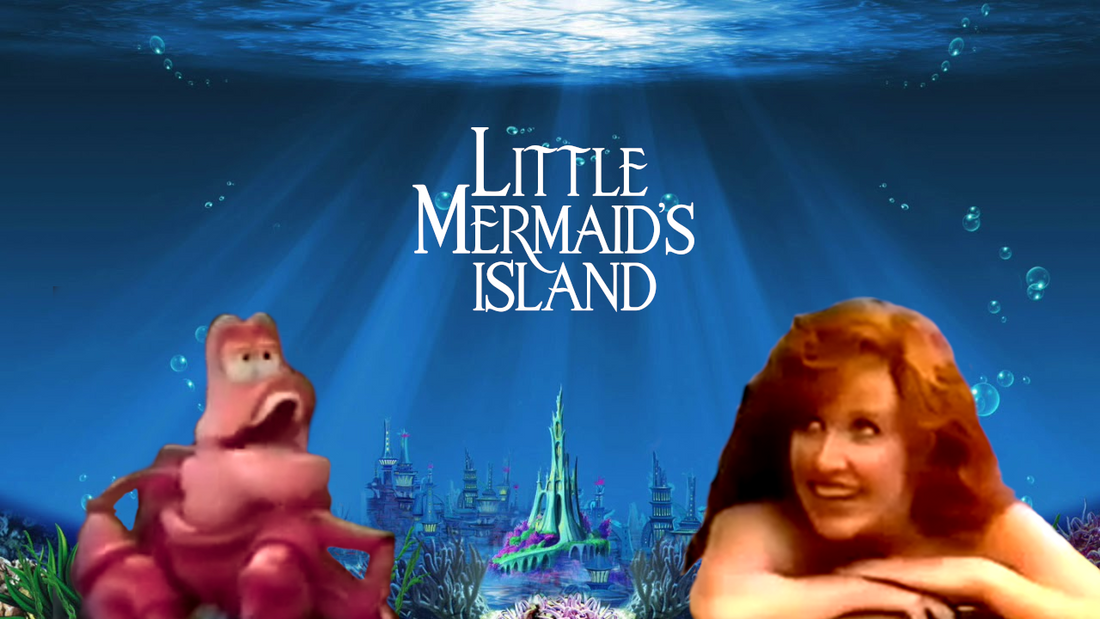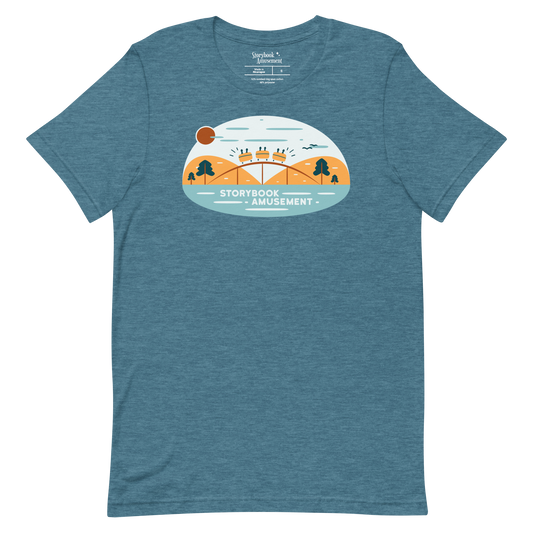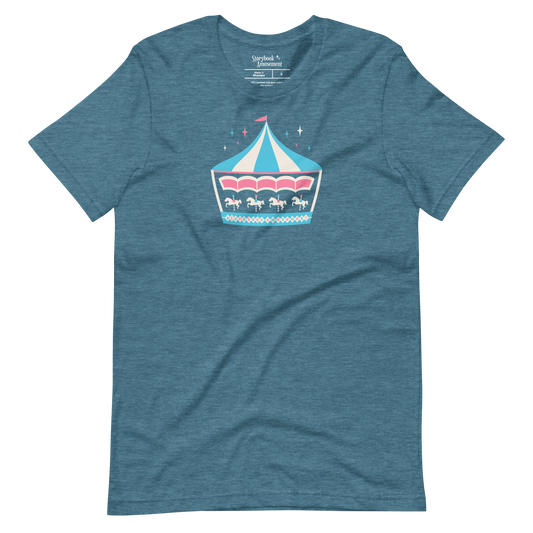Muppet Mania
After appearances in various segments on programs like Sam and Friends, The Ed Sullivan Show, and Sesame Street, Jim Henson’s Muppets launched into stardom in 1976 when The Muppet Show premiered, reaching more than 100 countries and 200 million viewers throughout its run. The variety show’s instant and continued popularity pushed Kermit and cast onto the silver screen years later with their first feature-length movie.
Behind Jim Henson’s creative drive, his production company, Henson Associates, had boomed to tremendous critical and box office success, but that momentum wouldn’t be sustained. The Muppet Show, though beloved around the world, ended after five seasons in 1981. Jim Henson through the ‘80s moved on to other projects such as numerous movies and being the creative force behind various projects for television. For the first time in years, Henson Associates’ future was uncertain.
Watch on YouTube
This article is available in video form with accompanying visuals. Click HERE to watch it.
A Henson-Disney Partnership Begins
Meanwhile, The Walt Disney Company, long removed from its golden and silver ages, was then under the leadership of its newly appointed CEO, Michael Eisner, who had been strategizing different options to revitalize the historic and acclaimed entertainment entity. Both in similar situations, Jim Henson and Michael Eisner would inevitably cross paths.
The two sides in spring 1989 entered negotiations for The Walt Disney Company to acquire Henson Associates. The merger would allow Disney to take care of the business side of production, freeing up Jim Henson to focus more on the creative side of his work. During the ongoing acquisition discussions, Jim Henson began collaborating with The Walt Disney Company to produce movies, theme park attractions, and TV shows.
That fall, Disney would return to its fairy tale form with its upcoming animated feature: The Little Mermaid. The adaptation was positioned to kick off a renaissance that would inspire a generation and started a wave of production opportunities for Disney and its partner-to-be, Jim Henson.
A New Wave of Disney Entertainment
By the late 1980s, production had been wrapping up on The Little Mermaid—a movie that captured the spirit of Disney storytelling. At the time, Jim Henson had been exploring collaboration ideas for his partnership with The Walt Disney Company.
Allegedly, while The Little Mermaid was still in production, Henson approached Disney with a pitch for a new show using characters from the imminent movie. Disney had been seeking spin-off concepts for the franchise and agreed to produce the show.
Under the name Little Mermaid’s Island, the show was planned to air on Disney Channel and have 25-minute episodes for a pre-school audience. Its cast would feature costumed live actors and puppets crafted by Ed Christie from Jim Henson's Creature Shop, and that was essentially the extent of Jim Henson’s involvement. He would not direct, produce, or perform in the show. Rather, the show was produced by John Purdy.
The two pilot episodes were filmed a few months after the movie’s release in spring 1990 in a studio in Los Angeles’ Silverlake district.
The Little Mermaid Spinoff Makes a Splash
The Cast
Little Mermaid’s Island featured many of the movie’s characters, including Ariel, played by Marietta Deprima; Sebastian, reprised by Samuel E. Wright from the movie; Scuttle, voiced by Buddy Hackett from the film; and Grimsby, played by Clive Revill. Uncredited returning characters include Flounder; Max the dog, which was a repurposed puppet from Jim Henson’s Labyrinth; as well as antagonists Flotsam and Jetsam.
In addition to the familiar faces, Little Mermaid’s Island also introduced new characters to the franchise: Flounder’s sister named Sandy, and a costumed character played by Michael Thompson named Scales the Dragon—he got the name because he’s a musical dragon. Get it? Musical scales. Dragon scales. Scales the Dragon.
Some of the movie’s key characters weren’t in the TV show, including Prince Eric and Ursula, but since the show was somewhat of a prequel to the movie, this made sense. Also missing from the lineup were King Triton and his daughters.
The actors and puppets performed in front of a blue screen with underwater and tropical sets edited behind them using chroma-key technology. The pilot episodes did not have a fully developed title sequence or proper ending credits, but they did have a theme song with Ariel and Sebastian singing.
The Pilots
Music was a strong premise in the show, with each episode featuring multiple numbers by the main characters. They all had their own style—Ariel sang pop songs, Sebastian performed reggae, and Scales played rock ‘n’ roll.
Little Mermaid’s Island had a few different settings where scenes took place: a reef on the ocean floor where many of Ariel’s scenes were, a bridge where Scuttle’s scenes were, a ship for Grimsby, and Scales’ cave that had a piano bridge leading to it.
Faithful to its Muppet roots, the show had a lot of puns—a lot. Most of the show’s jokes relied on play on words, mainly from Scuttle and Sebastian. The first of the two pilots was titled Sebastian’s Birthday, which had a familiar plot. The characters were acting too busy to notice it was Sebastian’s birthday. In the end, he found out everyone knew all along, and they threw him a surprise party at Scales’ cave. The second episode, called Tell The Truth, followed Flounder and Sandy as they struggled to tell Ariel the truth about what happened to her pearls. Scuttle also faced the same dilemma, and everyone learned their lesson about honesty. Both episodes were structured similarly and involved a subplot of the antagonist eels’ manipulating the characters.
A Short-Lived Promising Future
An edition of TV Guide also previewed the show before its premiere.“Kids who couldn't get enough of Disney's The Little Mermaid will have plenty of new mermaid adventure stories and music to look forward to.” — Stacy Smith, Los Angeles Times, February 1990
Reception and Cancelation
Overall, the pilots had good voice acting and catchy songs, especially from Sebastian, who was easily one of the stronger characters. Ariel was the moral compass of the show, and Scuttle provided consistent comic relief. The lively puppets were Muppet quality, even the unique designs of the eels. The show as a whole, however, was not up to Jim Henson’s standards. He was not satisfied with the two pilots.
On May 16, 1990, Jim Henson died unexpectedly, about two months after the pilots for Little Mermaid’s Island were filmed. The merger between Disney and Henson’s production company had not yet been finalized, and the contracts would remain unsigned.
Following Henson’s death, Disney did not have access to Henson’s team once they completed existing commitments. Little Mermaid’s Island, which was one of the final productions Henson had a hand in, was abandoned. Only the two pilots were filmed, and the episodes never aired. With Henson being disappointed in the results, he likely would’ve made adjustments to it. What the final product would have looked like is unknown.
"Little Mermaid's Island" References in Future Projects
Disney moved forward with other Little Mermaid projects, notably the Disney Channel TV series of the same name and the Voyage of the Little Mermaid stage show at Disney-MGM Studios, both of which debuted in 1992.
Disney released a Little Mermaid children’s book collection in the early ‘90s called The Little Mermaid’s Treasure Chest. The series was loosely based on the show, featuring Sandy and Scales from the unaired pilots. One of the sets from the abandoned project was used in a 1993 episode of Dinosaurs for a passing Little Mermaid spoof of shellfish singing a song called “Under the Water.”
Perhaps the only official Jim Henson and Little Mermaid connection we’re left with is a small Kermit the Frog Easter egg in The Little Mermaid.
I'd like to mention that one of the songs from Little Mermaid's Island would later be used in the Sesame Street VHS Tape Telling The Truth, just with rewritten lyrics. pic.twitter.com/nMIy992yJb
— 💀 Mike's TERROR TOWN 💀 (@MikesToonTown) April 5, 2021
The unaired pilots have been preserved online, leaving fans with one small example of what the Henson-Disney partnership could have produced.





